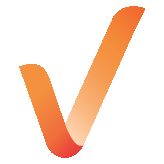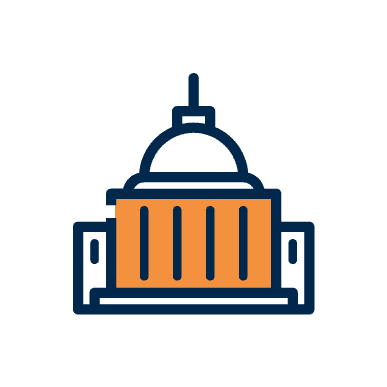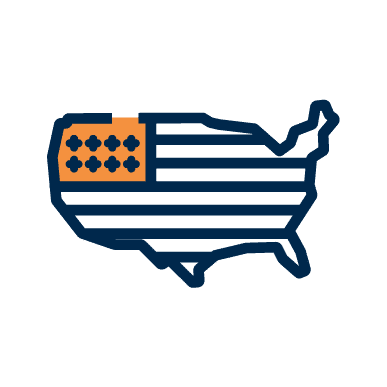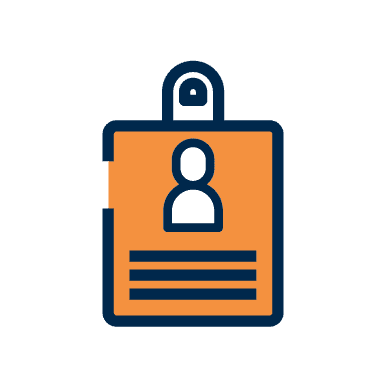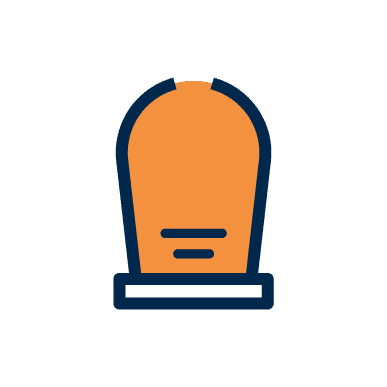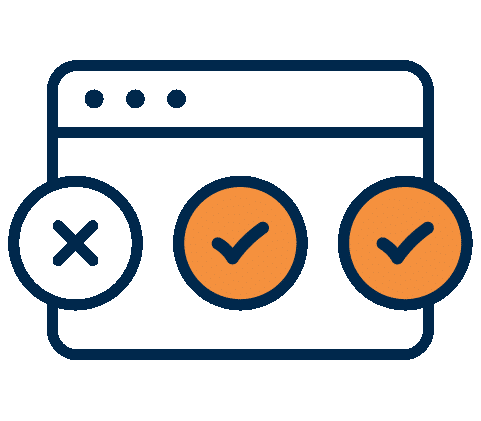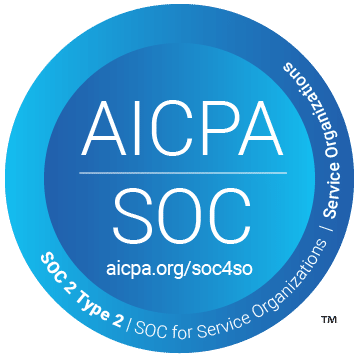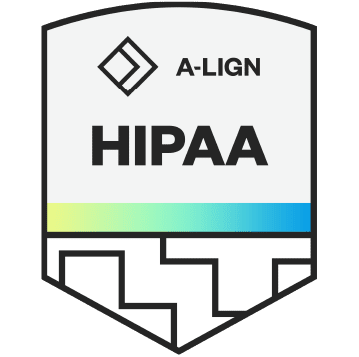Exclusion Compliance
Like you, we put compliance first
More Compliance Resources
More Compliance Resources
Understanding the
OIG Exclusion List
OIG Exclusions Screening Process
What is OIG Exclusion Screening?
Exclusion screening is the process of verifying that an employee or potential is not classified as an excluded individual who is prohibited from participation in any Federal health care program.
What is the significance and process behind an OIG background check?
An OIG background check is a vital part of healthcare background checks. Conducted by the U.S. Department of Health and Human Services (DHHS) Office of the Inspector General (OIG), it involves searching the List of Excluded Individuals and Entities (LEIE). This is a database that contains those who have been excluded from state and federal healthcare programs. If an applicant or employee is found on this list, the hiring organization risks losing the ability to contract with Medicare and Medicaid, as well as exposing itself to substantial financial penalties. Therefore, it’s critical for healthcare employers to not hire any employees, contractors, or volunteers who have been excluded during their period of exclusion.
How does an employer find out if an individual or entity is excluded?
The OIG does not issue individual warnings or notifications regarding excluded individuals. Employers are required to search the Federal Office of the Inspector General OIG Exclusion List database and SAM.gov , as well as each individual state’s Medicaid Exclusion Database, to verify each one of their employees. Various states require additional searches as well.
How is an exclusion screening search performed?
In healthcare exclusion screening searches are done as follows: The employer inputs the employee’s (or potential hire’s) name, date of birth into the database. The database returns a list of potential matches, including individuals with similar names. The employer must then independently verify whether or not the employee in question is, indeed, the same person as the excluded individual. Employers are also required to check all versions of each employee’s name, including maiden names, combined names (ie. Smith-Jones; Smith; and Jones), and name diminutives (i.e. Robert/Bob).
Is the OIG Exclusions list the only database that must be searched?
● The General Services Administration (GSA) Systems for Awards Management (SAM)
● Office of Foreign Assets and Control (OFAC)
● Drug Enforcement Agency (DEA) Excluded Parties List
● State Medicaid Exclusion Lists
Are employers really required to search each and every state’s data files?
Yes. Although the OIG does maintain its own database of excluded individuals, individual states may exclude individuals for reasons other than the ones cited by Federal law, without immediately reporting to the OIG or to other states. The only way for employers to ensure compliance with the mandated requirement is to conduct a nationwide search each and every month.
How often should employers and healthcare providers perform exclusion screening?
All employees must be verified against all exclusion databases, each and every month.
Is there any easier way to perform exclusion screening?
Exclusion screening software, designed specifically for this purpose, can lighten the load of exclusion screening considerably. The best software packages make exclusion screening virtually effortless.
What is the difference between Sanctions and Exclusions?
A healthcare sanction is the result of a disciplinary action taken by a state administrative body after it has determined that an individual or entity has violated an administrative rule, civil law or has committed a criminal offense. They can be found on the Office of Inspector General Sanctions list. The consequences for sanctions vary depending on the severity of the incident. Sanctions against health care staff are imposed for many reasons, including:
- Patient abuse/neglect
- Criminal conviction related to diversion of controlled substances
- Fraudulent billing for services and other forms of health care fraud
Exclusion from participation in federal or state healthcare programs is a severe form of sanction. Exclusion prohibits a sanctioned provider from participating in federal healthcare programs or receiving federally funded reimbursement. Learn more about Sanction Screening >
Employing an Excluded Individual
Consequences to Employing an Excluded Individual
What are the ramifications of keeping an excluded individual on staff?
By law, companies or facilities that participate in government health care programs may not employ an excluded individual. Fines for violation typically range between $30,000 and $300,000.
Can an OIG fine be reversed if the employer was unaware of the excluded status of an excluded employee?
No. Ignorance of the employee’s status is not an acceptable excuse. Employers are required to screen every employee, across every Federal and State database, every month, including all variations of the employee’s name, such as maiden names and name diminutives.
Can an employer bill for services performed by the excluded individual?
Employers will not receive reimbursement from Federal health care programs (including Medicare, Medicaid, TRICARE, and the Veterans Health Administration) for any treatment or service performed by the excluded individual, nor for any treatment or medication prescribed by the excluded individual.
Can an employer be sued for mistakenly firing an employee thought to be an excluded individual?
What are some of the ways to further verify if an individual is the same person appearing on the OIG Exclusions list?
● Date of birth
● Address
● Social Security Number
Exclusions FAQS
Quick OIG Exclusion Basics
Which government agency handles OIG Exclusions?
The Office of Inspector General (OIG) handles OIG Exclusions. It is a part of the U.S. Department of Health and Human Services (HHS). The HHS-OIG is responsible for combating federal healthcare fraud, waste and abuse through OIG Exclusions. You can visit their website here https://exclusions.oig.hhs.gov .
What is an OIG Exclusion?
Exclusion in this context refers to a penalty issued by Medicaid and the Office of Inspector General (OIG) to individuals involved in the health care industry who have been convicted of specified crimes. If an individual is excluded, he or she may not participate as a provider in any Federal health care program. In addition, excluded individuals may not be employed by any Federal health care program participant.
Who can be excluded?
Any individual or entity convicted of the specified crimes or misdemeanors. Excluded individuals may include MDs, PAs, RNs, LPNs, CNAs, and therapists, amongst a host of others.
How many types of exclusions are there?
There are two types of exclusions: Mandatory Exclusions and Permissive Exclusions.
Mandatory Exclusions are meted out as penalties for health care fraud/crimes; patient abuse; or unlawful distribution of controlled substances. The Office of Inspector General (OIG) is legally required to exclude individuals or entities convicted of such crimes for a minimum of five years. [42 U.S.C. § 1320a-7(a)]
Permissive Exclusions are mandated as penalties under 16 different authorities, and may be issued due to loss of state license to practice; failure to repay student loans; conviction of certain misdemeanors; failure to provide quality care; or one of several other misdemeanors. [42 U.S .C. § 1320a-7(b)]
Permissive exclusions are at the sole discretion of the OIG whether to place those guilty of misdemeanors related to federal or state healthcare programs under the LEIE. This includes reasons connected to professional competence, default in education loan obligations and financial integrity issues, among others.
How long do OIG exclusions last?
Mandatory exclusions can last depending on the number of
● Ten years (2nd
● Permanent exclusion (3rd
Permissive exclusions, on the other hand, can last at the discretion of the OIG. Placement on the OIG Exclusion database could be anywhere between one to three years.[3]
Can those on the OIG Exclusion list (LEIE) charge federal healthcare programs for their goods or services?
No. By law, Federal health care programs may not pay for any item or service furnished, ordered, or prescribed by an excluded individual or entity. This prohibition includes prescriptions for medications, as well as administrative or management services provided by the excluded individual.
What is LEIE?
How do you get out of the LEIE?
How frequently should employers check the OIG’s List of Excluded Individuals and Entities (LEIE)?
The LEIE should be checked prior to extending an offer to any potential hire. Following hire, employers and contracting entities should check the LEIE for all current employees, contractors, vendors, interns and volunteers each month to prevent the continued employment of excluded individuals or entities. The OIG updates the LEIE each month. Failure to check monthly exposes an organization to potential breach of contract claims, civil monetary penalties and other administrative actions by state or federal authorities.
Exclusion applies to more than direct care providers. Therefore, the monthly check of employees, contractors, and vendors against the current LEIE must not be limited to healthcare professionals primarily concerned with patient care. This review process should also include employees providing support services as well as administrative staff and managers. It does not matter if they do not have any interaction with patients. If such excluded individuals are connected to a business which is participating in federal or state healthcare programs, there is a potential violation of the law every time they carry out their functions in relation to that business.
Many state Medicaid contracts expressly require that the LEIE be checked monthly to assure that no excluded individuals or entities serve or receive reimbursement for services provided to Medicaid enrollees. Medicaid contractors may be deemed to have knowledge of exclusion whether or not they check monthly. It should be noted that the ACA extended the reach of Medicaid exclusions through Section 6501 which prohibits any state from allowing an excluded Medicaid provider in one state from participation in Medicaid in any other state. To assure that your organization has not been added to a federal or state list in error, it is prudent to screen your own organization, its business names and its subsidiaries to avoid unwelcome surprises.
Does the OIG List include any history of prior exclusions?
No. The OIG list is intended to reflect only individuals and entities that are currently excluded from participation in government healthcare contracts. The LEIE also does not reflect reinstatement dates for those individuals and entities who apply for and are granted reinstatement. However, reinstatement is not automatic and is not guaranteed.
Exclusion information is available to LEIE users in several forms. The full LEIE Database updated monthly is a complete inventory of all individuals or entities currently under exclusion and can include information that stretches over many years. The Monthly Supplement files contain only the reinstatements for one month or the exclusions for one month. The Reinstatement Supplement contains information not captured in either the full LEIE database or the monthly exclusion supplement. These monthly reinstatement files contain valuable information for potential employers to identify previously excluded parties when making hiring decisions. While employers can hire individuals or entities previously excluded, they may wish to better understand the prior actions of a potential hire that resulted in exclusion.
The OIG Exclusion List and the CMS Preclusion List - are they related?
Yes, they are, but they are not entirely consistent.
The Preclusion List, updated monthly, provides the name of providers and prescribers who are precluded from receiving payment for Medicare Advantage (MA) plan items or services, or Medicare Part D drugs furnished or prescribed to Medicare beneficiaries. This payment limitation applies to MA plans, Medicare Cost plans and Programs of All-Inclusive Care for the Elderly (PACE) plans and Medicare Part D plans. Effective April 1, 2019, MA plans were required to deny payment for a health care item or service furnished by an individual or entity on the CMS Preclusion List and Part D plans were required to reject a pharmacy claim (or deny a beneficiary request for reimbursement) for a Part D drug prescribed by an individual on the Preclusion List.
The CMS Preclusion List is comprised of any individual or entity that meets the following criteria:
> Is currently revoked from the Medicare program and is under an active reenrollment bar, and CMS has determined that the underlying conduct that led to the revocation is detrimental to the best interests of the Medicare program;
> Has engaged in behavior for which CMS could have revoked the individual or entity to the extent applicable if they had been enrolled in Medicare, and CMS determines that the underlying conduct that would have led to the revocation is detrimental to the best interests of the Medicare Program, or
> Have been convicted of a felony under federal or state law within the previous 10 years that CMS deems detrimental to the best interests of the Medicare program.
The Preclusion List can include not only individual medical practitioners and providers, but also dentists, pharmacists, pharmacies, medical practices and medical suppliers. In addition, providers who voluntarily opt out of Medicare will appear on the Preclusion List.
How These Lists are Related
Use of the CMS Medicare Preclusion List does not eliminate the requirement that Medicare Advantage and Part D plans validate their providers monthly against the OIG’s LEIE. This list is updated monthly by the OIG to reflect exclusions from participation and payment under Medicare or Medicaid contracts due to criminal behavior.
There is indeed substantial overlap between the lists but they are not entirely consistent:
- Providers excluded by the OIG’s LEIE will be on the CMS Preclusion List. OIG exclusions are imposed due to criminal behavior and as such are part of the CMS Preclusion List criteria. Therefore, if a plan finds a provider in the OIG LEIE, the plan is not required to check the CMS Preclusion List.
- However, there are other providers who are precluded by CMS from participation in a Medicare plan and yet will not appear on the OIG Exclusion List because the preclusion is based on other criteria. In that case, a MA or Part D plan should check the CMS Preclusion List as well.
An additional factor to consider is why a provider was excluded or precluded. Once a provider is removed from the OIG’s LEIE and is no longer excluded due to a reinstatement by the OIG, a MA and Part D plan must then turn to the CMS Preclusion List because there are instances in which a provider remains precluded by CMS from plan participation even though they are no longer excluded by the OIG. For example, CMS may bar reinstatement from Medicare plan participation or perhaps the provider was precluded for behavior which CMS deems sufficiently problematic to warrant being removed from participation in a Medicare plan even though it did not result in a criminal conviction.
Another difference between the two lists is data capture. Unlike the OIG’s LEIE list which deletes the names of providers who are reinstated or have completed their period of exclusion, impacted providers will not drop off the CMS Preclusion List. Instead, the updated CMS List will indicate a reinstatement date that an impacted provider is no longer precluded.
The OIG issued a notice in 2022 that it considered whether to discontinue its publication of monthly supplements to the LEIE but as of December 2022, these are still available.
How do individuals or companies end up on the OIG exclusion list?
There are many reasons that an individual or organization can be excluded, as explained in some detail on the HHS OIG website as well as industry issuances.
Most exclusions by the OIG start with a state’s report of a felony or misdemeanor criminal conviction or due to professional misconduct that resulted in sanction of a provider/entity by a state licensing board. For example, a nurse whose professional license is revoked (or voluntarily surrendered) due to a quality of care issue or drug abuse charge will be subject to exclusion at the federal level. States are required to notify the OIG of such actions taken.
There are two types of exclusions that the OIG can impose. The misconduct or criminal action dictates which type of exclusion applies:
- Mandatory Exclusion. If an individual/entity is convicted of the following criminal offenses, the OIG is required by law to impose a minimum 5-year term of exclusion. The OIG has no discretion on decisions to exclude in cases that meet the statutory exclusion standards that include
- Health care fraud related to Medicare, Medicaid, SCHIP, or any state’s healthcare program;
- Patient abuse or neglect; and
- Felony conviction under Federal or State law relating to fraud, theft, embezzlement, breach of fiduciary responsibility, or other financial misconduct in connection with the delivery of a health care item or service.
- Permissive Exclusion. Unlike mandatory exclusions, the OIG has some discretion when imposing permissive exclusions and the term of exclusion. Permissive exclusion generally involves misdemeanor criminal convictions, as well as other lesser offenses, including default on student loans.
If an OIG check results in a match, what should we do?
For smaller organizations who have a limited number or employees, providers and contractors, checking the OIG Exclusion List may seem a quick monthly exercise. Simple exclusion screening searches are done as follows: The employer inputs the employee’s (or potential hire’s) name, date of birth into the database. The database returns a list of potential matches, including individuals with similar names. The employer must then independently verify whether or not the employee in question is, indeed, the same person as the excluded individual. Employers are also required to check all versions of each employee’s name, including maiden names, combined names (i.e., Smith-Jones; Smith; and Jones), and name diminutives (i.e., Robert/Bob).
If you have all of the identifiers needed to definitively rule out any false positive or false negative potential matches, and have a very stable employee and contractor base, then how could there be a change in status from one month to another? In short, changes can be noted from month to month due to a number of factors, including delays by the OIG to upload information from the state Medicaid programs (which routinely submit updated exclusion information months late), delays by states to update their Medicaid exclusion lists, provider name changes or clarifications, and reinstatements into the Medicare program going into effect.
If an organization chooses to pursue in-house exclusion checking, it needs to establish a dedicated resource who will not only check the LEIE and the GSA’s SAM List as required by contract, but also be prepared to research other databases such as state Medicaid exclusion lists (Medicaid providers), the CMS Preclusion List (for Medicare providers), state licensing board actions, as well as cross-checking provider identifiers such as their EIN or other national databases when names or information noted in the LEIE do not appear to clearly eliminate a potential match. Checking state exclusion databases is necessary because individual states may exclude individuals for reasons other than the ones cited by federal law, without immediately reporting to the OIG or to other states. The only way for employers to ensure compliance with the mandated requirement is to conduct a nationwide search each and every month.
The complexity of the monthly OIG checking process for all organizations is daunting and very time intensive. To avoid failing to identify an excluded individual or entities, healthcare contractors often leverage the expertise of organizations such as Streamline Verify which have created proprietary software to compare information across all relevant databases and exclusion lists. By engaging a contractor to perform the required checks on a monthly basis, healthcare organizations can use their internal resources to address any potential matches that Streamline Verify has extensively vetted across multiple lists. This is a much more cost-effective approach that also guarantees a consistent monthly check to assure that an organization is not risking potential exposure to fines, penalties and findings
OIG Compliance Law
Laws and Publications on OIG Compliance

